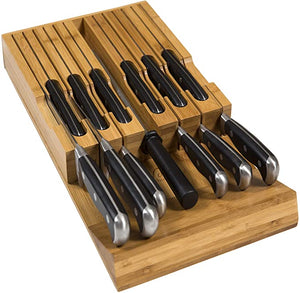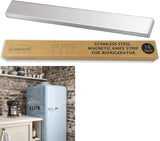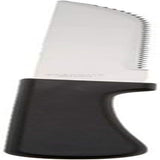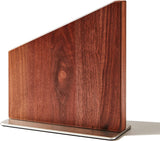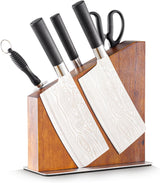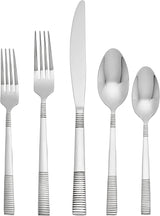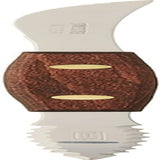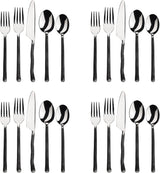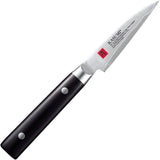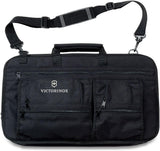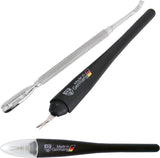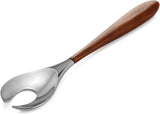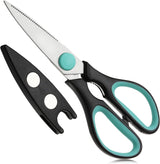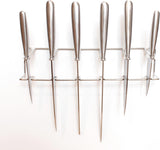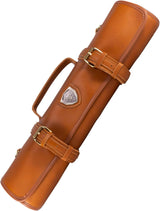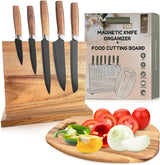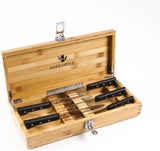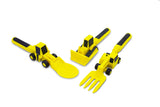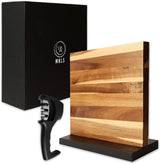As a kitchen professional, ensuring your tools are in peak condition is not just a matter of convenience it is a fundamental aspect of delivering exceptional results. One such tool is the serrated steak knife, often celebrated for its ability to slice through tender cuts of meat cleanly and efficiently. But like any blade, a serrated steak knife also loses its edge over time. If you're wondering how to sharpen a serrated steak knife, you've come to the right place.
Unlike conventional plain-edged knives, serrated steak knives require a different approach to maintain their sharpness while preserving the integrity of the serrations. A blunt serrated knife doesn't only frustrate cooking enthusiasts it also risks compromising the quality and precision of your dishes, something no kitchen professional wishes to encounter.

Understanding the Anatomy of a Serrated Steak Knife
Before diving into the art of sharpening, understanding the core anatomy of the serrated steak knife is crucial. These knives are distinct due to their saw-tooth-shaped edge that typically has two sides:
- The Serrated Side: The side with teeth for cutting through tough or fibrous surfaces.
- The Smooth Side: Often flatter, which aids in slicing when paired with the serrated side.
The unique design of serrated knives minimizes the cutting resistance, making them ideal for slicing delicate meats, crusty bread, and even soft vegetables. However, this unique structure is also why sharpening them requires careful attention to each serration.
Why Sharpening Serrated Knives Is Essential
Sharpening a serrated steak knife might seem like a daunting task, even for seasoned kitchen professionals. However, it's pivotal for the following reasons:
- To ensure precisely carved dishes without tearing or shredding the material.
- To increase the efficiency and lifespan of the knife.
- To reduce wear and tear, especially during prolonged use in professional kitchens.
Interestingly, serrated knives tend to stay sharp longer than straight-edge knives due to their unique design. Still, over time, each tooth can lose its pristine edge, often imperceptibly. Regular maintenance not only keeps the blade functional but also minimizes replacement costs. For additional tips on proper knife maintenance, visit the guide on how to clean a knife.
Essential Tools for Sharpening Serrated Knives
Before starting the sharpening process, it's crucial to gather the correct tools. The most commonly used tool is a sharpening rod, also known as a serrated sharpener. Tools you'll need include:
- A serrated sharpening rod, preferably diamond-coated.
- A honing rod for light maintenance.
- A soft microfiber cloth to clean the blade after sharpening.
It's also essential to identify the tooth size of your knife, as serrated sharpening rods come in various diameters. The rod's size must match the curve of the serration for accurate and effective sharpening. For more information on selecting the right tools, you can explore types of kitchen knives and their care tips.
Step-By-Step Guide to Sharpen Serrated Steak Knives
Now that you have a better understanding and all the necessary tools, here is a detailed, step-by-step guide on sharpening your serrated steak knife:
1. Examine the Knife's Serrations
First, inspect your knife to understand its serration pattern. Some knives have smaller, tighter serrations, while others feature wider teeth with deeper grooves. Identifying this will help you choose the appropriately sized serrated sharpener.
2. Position the Sharpening Rod
Insert the serrated rod into one of the grooves of the blade. Carefully match the rod's angle with the bevel of the serration. In most cases, this angle should be approximately 20 degrees, but it can vary by brand and design.
3. Guide the Rod Through the Serration
Gently glide the sharpening rod along the inside curve of the serration. Use smooth, consistent strokes to ensure uniformity. Make sure you apply pressure evenly and avoid over-sharpening the tip of the serration.
Not confident with the sharpening process? Professionals seeking other knife-related guidance can check the step-by-step guide on how to hold a steak knife for more insights.
4. Hone the Edge
After sharpening each serration, use a flat honing rod to remove micro-burrs from the blade's edge. This technique polishes the blade for smoother performance.
5. Test the Sharpness
Finally, test the sharpness of your knife by slicing through paper or a piece of soft bread. A sufficiently sharp serrated steak knife should cut with minimal resistance.
Maintenance Tips to Prolong Sharpness
Now that your knife is sharp, maintaining its edge is the next critical step. Follow these tips:
- Clean your knife thoroughly after each use to prevent food residue buildup. Learn more about the importance of cleaning your tools here.
- Avoid using serrated knives on hard surfaces like ceramic or glass to minimize wear.
- Store your knives in a protective sheath or a knife block to safeguard the edge.
For a deeper dive into knife maintenance, check out the comprehensive guide on knife care tips.
In Conclusion
Mastering how to sharpen a serrated steak knife is a game-changer for kitchen professionals. A sharp blade ensures efficiency, precision, and the seamless execution of your culinary artistry. While it requires a slightly different approach compared to straight-edged knives, the reward of a perfectly sharp serrated knife is well worth the extra effort.
Remember, practicing the correct sharpening technique and committing to regular maintenance will not only enhance the life of your serrated steak knives but will also elevate your overall cooking experience.
Looking to gift someone the perfect kitchen accessory? Dont miss the ideas in this article about what to gift with a cutting board.

FAQs
1. How often should I sharpen a serrated steak knife?
This depends on the frequency of use. For professional kitchens, sharpening every six months or after noticing dull performance is recommended.
2. Can I use a regular sharpening stone for serrated knives?
No, serrated knives require a rod sharpener specifically designed for their unique blade shape.
3. What is the best way to store serrated knives?
Store them in a knife block or magnetic strip to prevent damage to the serrations.
This article contains affiliate links. We may earn a commission at no extra cost to you.
